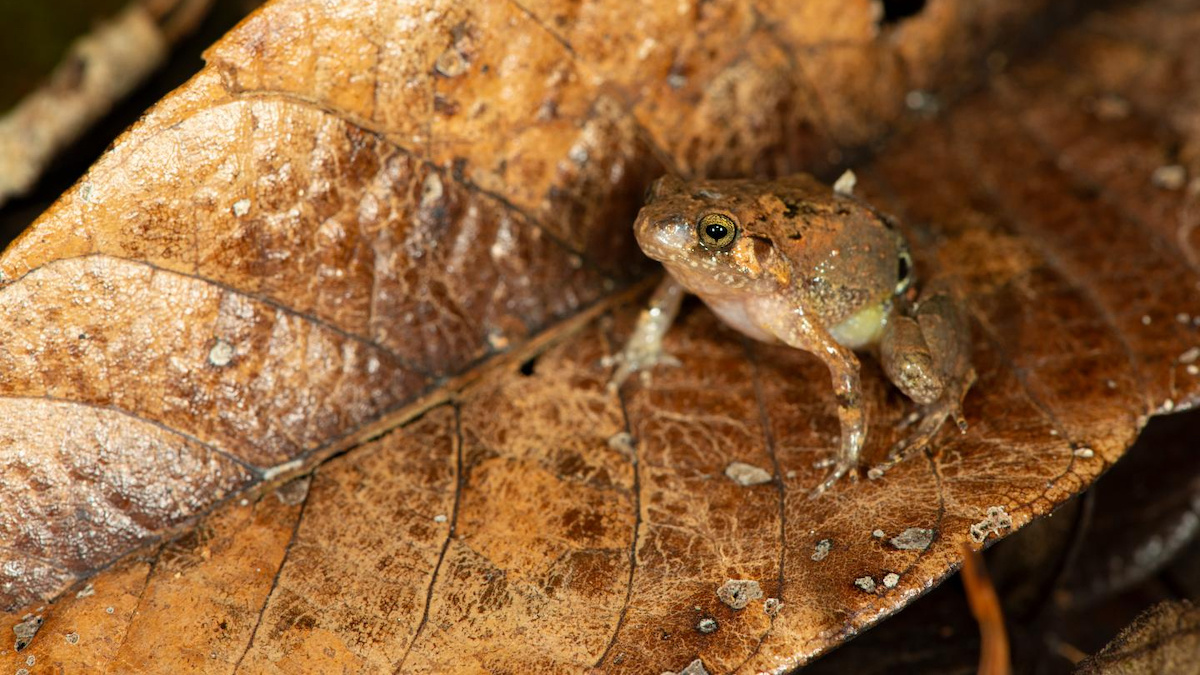
New Species of Diamond Frog Discovered in Remote Pocket of Madagascar

The new species, Rhombophryne ellae, is well camouflaged among the rainforest leaflitter. Mark D. Scherz
Located just off the southeastern coast of Africa, Madagascar is a remote island nation and home to one of the most biodiverse pockets in the world, among them the elusive diamond frog. Even in the most well-studied areas, new species are constantly being discovered.
Defining and characterizing the “hyper diverse island” is an ongoing effort that has yielded many results in recent years, including defining and characterizing frogs of the diamond genus Rhombophyrne. In the last decade alone, the diversity of diamond frogs has more than doubled, yet even so a number of undescribed species still persist in the wild. Now, Rhombophyrne ellae is a brightly orange colored, highly miniaturized frog described in Zoosystematics and Evolution that is furthering the scientific community’s understanding of amphibians on this remote, isolated island.
“As soon as I saw this frog, I knew it was a new species,” said Dr. Mark D. Scherz of the Technical University of Braunschweig. “The orange flash-markings on the legs and the large black spots on the hip made it immediately obvious to me. During my Master’s and Ph.D. research, I studied this genus and described several species, and there are no described species with such orange legs, and only [a] few species have these black markings on the hip. It’s rare that we find a frog and are immediately able to recognize that it is a new species without having to wait for the DNA sequence results to come back, so this was elating.”
The study is just the third to have been published on reptiles or amphibians in the park, and describes the finding of R. ellae in 2017. Characterized by the orange coloration on its legs and large black spots, this species is closely related to another poorly known and undescribed species of frog from northern Madagascar. It remains unclear why diamond frogs have such dramatic coloration even though it appears that this feature has evolved in many Madagascar frogs.
In itself, the discovery highlights how little is still known about our planet, particularly small species found in remote and biodiverse places around the world – even the most well-studied regions.
“The discovery of such a distinctive species within a comparatively well-studied park points towards the gaps in our knowledge of the amphibians of the tropics,” said Sherz.
“It also highlights the role that bad weather, especially cyclones, can play in bringing otherwise hidden frogs out of hiding – R. ellae was caught just as Cyclone Ava was moving in on Madagascar, and several other species my colleagues and I have recently described were also caught under similar cyclonic conditions.”
Though the conservation status of R. ellae still remains unknown, the researchers conclude that it is likely to be considered “near threatened” due to its small range.
- Climate Crisis Could Cause a Third of Plant and Animal Species to ...
- New Frog Species Is Discovered in Peru - EcoWatch
- 503 New Species Identified in 2020, Including Endangered Monkey - EcoWatch
- Species Snapshot: The El Rincon Stream Frog Is in Hot Water

 233k
233k  41k
41k  Subscribe
Subscribe 